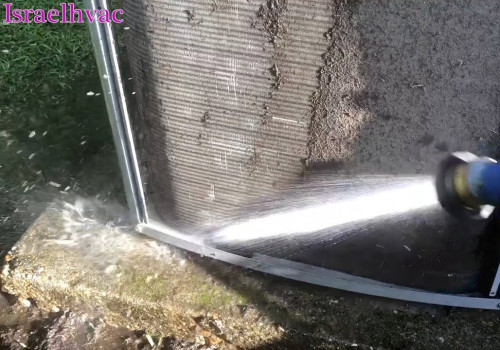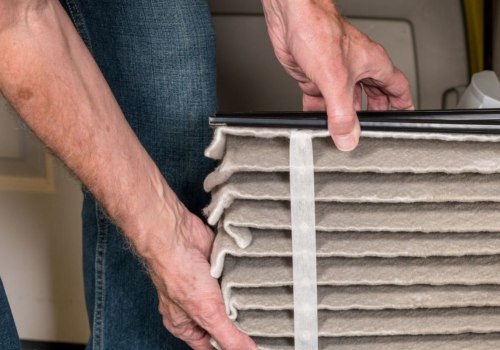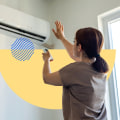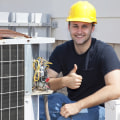Key Takeaways
- Comprehending cooling systems is crucial for effective setup.
- Proper preparation is essential before beginning the installation.
- Necessary tools and supplies should be gathered in advance.
- Following a detailed installation procedure ensures success.
- Conducting tests on the cooling system verifies proper functionality.
How To Efficiently Install Your New Air Conditioning System | Understanding Air Conditioning Systems
Understanding the various types of air conditioning systems is crucial for anyone looking to efficiently install their new air conditioning unit. Different systems, such as central air conditioning or ductless mini-splits, cater to specific space requirements and climate conditions. Familiarity with the key components of these air conditioning systems, including the evaporator, condenser, and the compressor, plays a significant role in ensuring proper installation. Knowledge about heating, ventilation, and air conditioning (HVAC) systems can also aid in selecting compatible units that will work seamlessly together. By grasping the fundamentals of air conditioning and heating & air conditioning, homeowners can make informed decisions that lead to optimal efficiency and comfort. Understanding these aspects can greatly enhance your ability to implement an effective plan on how to efficiently install your new air conditioning system.
How to Efficiently Install Your New Air Conditioning System | Types of Air Conditioning Units
Air conditioning units come in various types, each tailored to specific needs and environments. Central air conditioners are designed to cool an entire home efficiently, using a system of ducts to distribute conditioned air. These HVAC systems not only enhance comfort but also contribute to improved air quality by filtering dust and allergens. Other options include window air conditioners and portable units, which provide cooling solutions for smaller spaces and can be easily moved as needed. Understanding the different types of air conditioners is essential for determining how to efficiently install your new air conditioning system.
Choosing the right air conditioning unit can significantly impact the effectiveness of your HVAC system. A well-selected unit should match the size of your space to ensure optimal performance and cleaner air. Factors such as energy efficiency ratings, noise levels, and the capability to integrate with existing heating systems must also be considered. Assessing these elements ensures that your air conditioning installation will provide the best conditioned air possible, keeping indoor air comfortable and healthy for occupants.
| Type of Air Conditioning Unit | Cooling Capacity | Energy Efficiency Rating | Ideal Space Size | Installation Complexity |
|---|---|---|---|---|
| Central Air Conditioner | 2-5 tons | SEER 14-24 | Whole Home | Moderate to High |
| Window Air Conditioner | 5,000 - 15,000 BTUs | Seasonal Energy Efficiency Ratio (SEER) 10-12 | Single Rooms | Low |
| Portable Air Conditioner | 8,000 - 15,000 BTUs | SEER 8-10 | Small to Medium Rooms | Low |
| Ductless Mini-Split System | 9,000 - 36,000 BTUs | SEER 18-30 | Multiple Rooms | Moderate |
Key Components of Air Conditioning Systems
A successful installation of a carrier air conditioner requires understanding its essential components. The air ducts play a crucial role in distributing conditioned air throughout your space. Proper airflow is vital for maintaining optimal air temperature and ensuring the efficiency of heating and cooling systems. Selecting the right air filters can significantly enhance indoor air quality and maintain the longevity of the refrigeration system, making it a key focus for anyone learning how to efficiently install your new air conditioning system.
The cooling capacity and cooling load of the unit are integral to its performance. These specifications determine how effectively the system can manage the desired temperature in your living space. Ventilation is another critical aspect, as it allows for the exchange of stale indoor air with fresh outdoor air, contributing to a comfortable and healthy environment. Understanding these components and their functions will make the process easier for those who want to know how to efficiently install your new air conditioning system.
Preparing for Installation
Properly preparing for installation is crucial for understanding how to efficiently install your new air conditioning system. Evaluating your space requirements ensures that the selected unit, whether an inverter air conditioner, central air, or a system with central heating, fits seamlessly into your home. Considerations should include the compatibility of the electrical system to support the compressors and boilers required for efficient heating and cooling. Effective humidity control and the inclusion of essential components like a condensate pump also play a vital role in system safety and performance. Taking these steps will lay a solid foundation for a successful installation process.
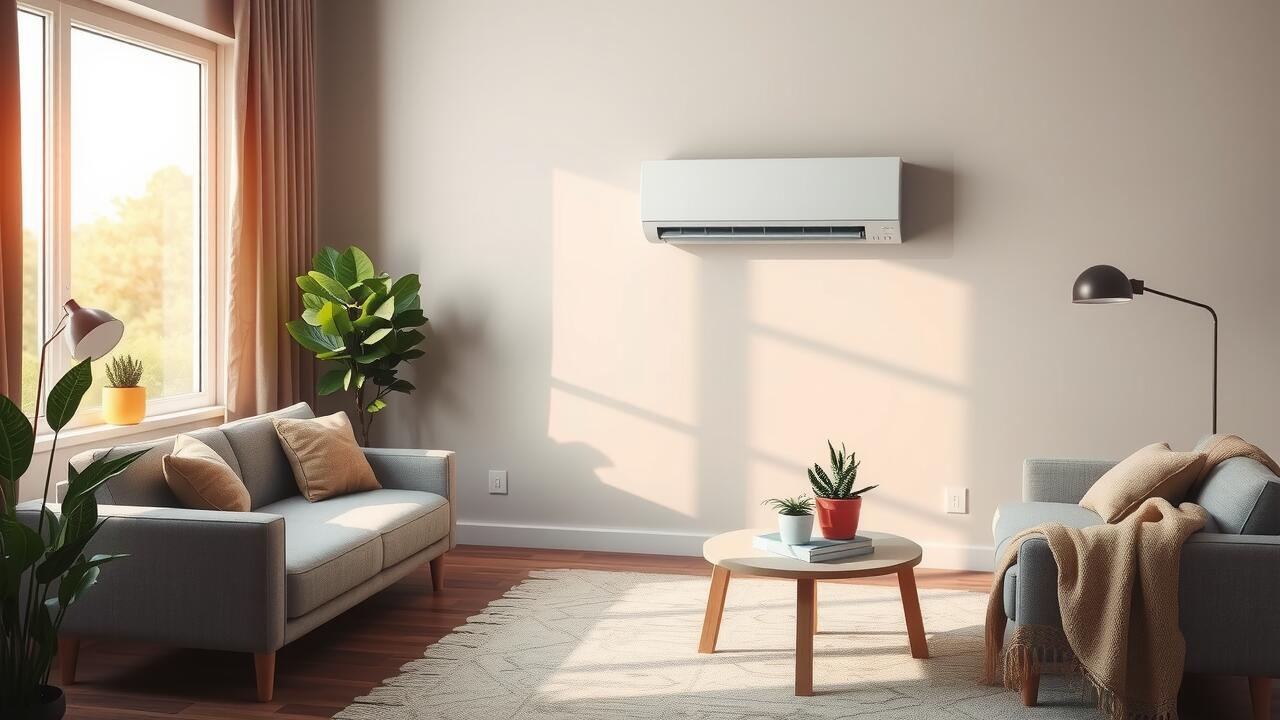
Assessing Your Space Requirements
Assessing space requirements is a critical step for how to efficiently install your new air conditioning system. Every home or office has unique dimensions that must be taken into account before selecting the appropriate air conditioning options. Understanding your available space helps in determining the right type and size of the new air conditioner, ensuring optimal performance and efficiency. Small spaces may benefit from compact models, while larger areas often require modern air conditioning systems that can adequately cool multiple rooms or zones.
Proper space assessment also plays a vital role in the overall efficiency of the system. An efficiency-optimized air duct layout improves airflow and reduces energy consumption during operation. Consulting with experienced air conditioner installers can provide insights into how to efficiently install your new air conditioning system, particularly regarding new HVAC installations. Investing time in evaluating your space ensures that the selected new HVAC system meets your cooling needs effectively, providing comfort throughout the warmer months.
Selecting the Right Air Conditioning Unit
Choosing the right air conditioning unit is crucial for effective cooling and energy efficiency. Modern air conditioners come in various types, including central air, ductless mini-splits, and geothermal air conditioning systems. A thorough understanding of your space requirements and how the new air conditioner will integrate with your current air duct system can make a significant difference. An assessment of the different HVAC system options available will help ensure that you purchase the right HVAC system tailored to your specific needs.
A professional HVAC installation is essential to maximize the performance of your new unit. Selecting an air conditioner unit that matches the size and cooling requirements of your space will prevent issues common with old HVAC systems, such as inefficiency and inconsistent temperatures. Accurate installation not only enhances the overall functionality but also prolongs the lifespan of the entire air conditioner. Understanding the nuances of how to efficiently install your new air conditioning system can save you from unnecessary headaches down the line.
Installation Tools and Materials
Successfully learning how to efficiently install your new air conditioning system requires the right tools and materials to ensure optimal performance. Essential tools include screwdrivers, wrenches, and a vacuum pump, which are critical during the entire HVAC installation. Selecting the appropriate materials, such as high-efficiency air filters and insulated copper lines, is vital for maximizing the efficiency of your air conditioner models. Pay attention to the air conditioner condenser, as proper setup impacts the supply air temperature and effective airflow. Using industry-leading air conditioners and heat pumps helps achieve a perfect air conditioner that delivers good air quality. Understanding the HVAC installation process will guide you through the necessary steps to achieve a reliable and efficient system.
Essential Tools for Air Conditioning Installation
A variety of essential tools is necessary to efficiently install your new air conditioning system. Basic tools such as screwdrivers, wrenches, and pliers are crucial for assembling and securing components. HVAC techs often rely on specialized instruments like a refrigerant gauge to measure pressure levels, ensuring the cooling system operates optimally. A level is vital for mounting the indoor and outdoor units correctly. Investing in quality tools makes a significant difference in the installation process and helps achieve the best airflow needs for your new system, minimizing issues such as air leaks and ensuring proper temperature control.
Beyond basic hand tools, certain materials are also required to ensure a successful installation. Insulated copper tubing, which transports refrigerant, must be carefully cut and fitted to prevent air duct leaks. A good HVAC contractor will have access to line sets, fittings, and electrical components specific to the new Carrier air model being installed. Protective gear, including gloves and goggles, is essential for safety during the installation. A good HVAC company will also provide guidance on the specific tools and materials needed based on the size of HVAC systems and the layout of your space. Understanding how to efficiently install your new air conditioning system can lead to long-term comfort and efficiency.
- Choose high-quality screwdrivers and wrenches for durability and reliability.
- Use a refrigerant gauge to accurately monitor system pressure.
- Ensure a level is available for precise unit alignment.
- Keep insulated copper tubing and necessary fittings on hand for proper refrigerant flow.
- Always wear protective gear such as gloves and goggles during the installation process.
- Familiarize yourself with the manufacturer's specifications for tools and materials needed.
- Consult with an HVAC professional for advice on specific installation requirements.
Necessary Materials for Setting Up
Understanding necessary materials is crucial for a successful new installation of an air conditioning system. Key components include insulated copper lines, a refrigerant, and a drain line. These items ensure proper airflow and balanced air distribution throughout the space. The expertise of a professional HVAC technician can significantly streamline the installation process while helping to manage HVAC installation costs effectively. Having the right materials readily available allows for efficient work by experienced HVAC contractors.
A virtual HVAC technician can also assist in determining the materials needed for optimal performance. Extra airflow might require specific ductwork or vents to maintain the desired temperature during warm air seasons. Utilizing appropriate sizes and types of materials is critical for achieving efficient air circulation. This attention to detail will ensure effective operation in line with best practices on how to efficiently install your new air conditioning system.
Step-by-Step Installation Process
To efficiently install your new air conditioning system, it is essential to learn the steps involved in placing, installing, and testing a new AC unit. Start by assessing your space and determining the best location for the indoor and outdoor units. A local HVAC technician can provide valuable insights into your installation process. Once you have chosen the right air conditioning system, connect the indoor and outdoor units and ensure proper electrical wiring. After installation, testing the system will help confirm that air moves effectively through the new duct system, aligning with your air distribution requirements. Regular maintenance, such as changing air filters, is crucial for efficiency, especially as your cooling needs change. Consulting with good HVAC companies can ensure a quality installation that meets industry standards.
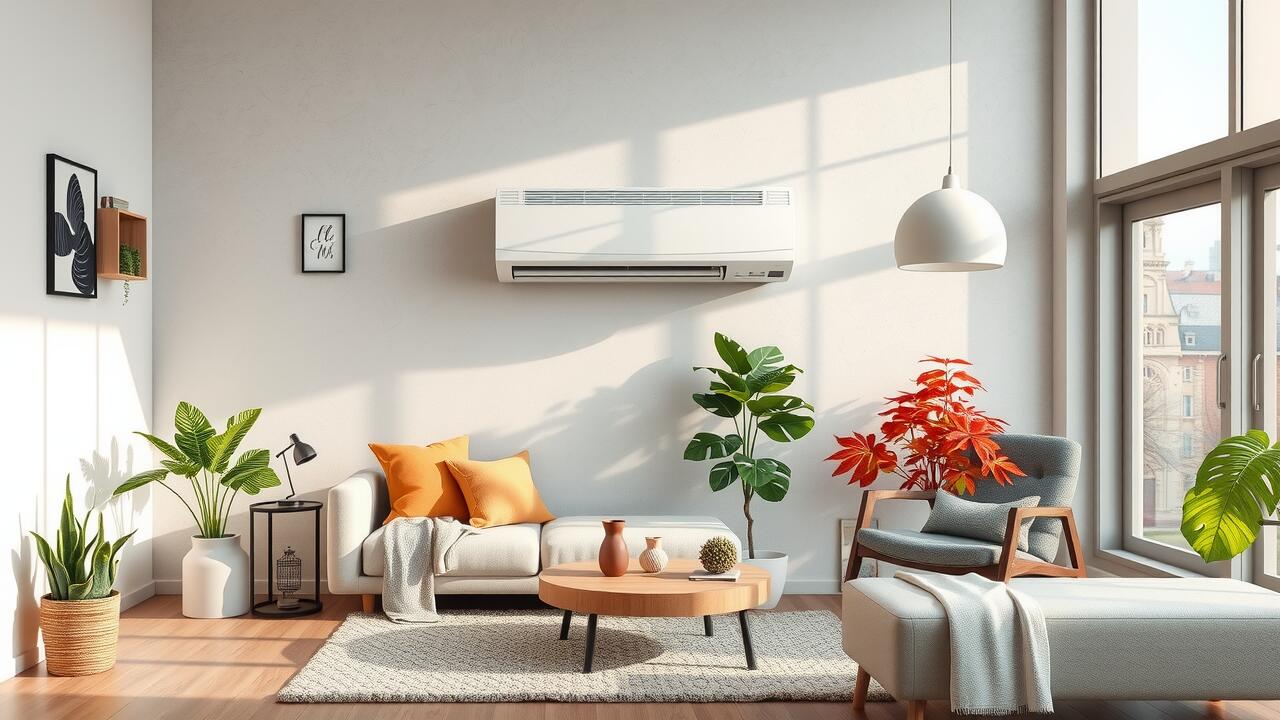
Installing the Indoor Unit
Installing the indoor unit is a crucial step in how to efficiently install your new air conditioning system. Start by selecting an appropriate location that meets your cooling needs and ensures sufficient cooling capacity. Proper ductwork installation will enhance system efficiency and allow for optimal airflow throughout your space. Engaging a licensed HVAC technician can help ensure that the unit is set up correctly, adhering to the maintenance requirements for a well-maintained system. This will also facilitate effective heat exchange and promote cool air distribution.
Once the unit is securely mounted, connect it to the outdoor unit as per the specifications provided by the manufacturer. This step often requires the expertise of a certified HVAC contractor to ensure proper connections and prevent potential issues. Skilled HVAC technicians will also assist in checking the system's overall setup, including electrical connections and refrigerant levels. Completing these tasks properly ensures a high-quality system that will provide efficient home cooling for years to come.
Setting Up the Outdoor Unit
Setting up the outdoor condenser unit is a critical step in how to efficiently install your new air conditioning system. The location for the outside condenser unit should be on a stable and level surface with access to proper ventilation. Ensure that it is adequately distanced from heat-producing appliances and any obstructions that might block airflow. This positioning not only enhances effective cooling but also aids in frequent system maintenance. Consulting a reputable HVAC company can provide guidance on the optimal placement and installation techniques.
After securing the outdoor unit, connect the refrigerant lines and electrical components according to the manufacturer’s specifications. Using a licensed HVAC installer will ensure that all connections are made safely, which is crucial for the longevity of your system. Choosing an experienced installer can also facilitate potential HVAC financing options if you are considering combined heating and cooling options. Proper installation by a good installer will ultimately lead to a more reliable air conditioning system that performs well throughout its lifespan.
Connecting Electrical Wiring
Properly connecting electrical wiring is crucial for a successful air conditioning installation. This indoor installation step ensures that the system operates efficiently, maintaining the desired return air temperature. Ensure the electrical upgrades meet local codes and regulations. Check for adequate insulation in your attic, as this can significantly affect the overall efficiency of your residential air system. An average carrier air unit will not perform optimally if the wiring is improperly connected or if there are issues with the insulation.
The refrigerant system relies on a correctly wired condenser unit to function effectively. During the wiring process, ensure the connections are tight and secure. Inspect all components to verify they are compatible with your new ductwork. This attention to detail during the electrical installation phase helps avoid future malfunctions and ensures a well-adjusted system. Understanding how to efficiently install your new air conditioning system involves not only the physical setup but also the proper handling of electrical tasks for long-term reliability.
Testing the Air Conditioning System
Ensuring your new air conditioning system operates as intended requires a thorough testing phase. Start with a cooling assessment to confirm that the unit produces robust air flow and effectively maintains the overall room temperature. Check the walls and floors for any signs of air leaks that could undermine the system's efficiency. An efficient machine should provide cold air consistently throughout the space, regardless of outdoor conditions. Engaging with a trusted HVAC dealer for insights on the current system can enhance performance. Pay special attention to the condensate system, as proper drainage is crucial for good installation. Multiple cooling zones can improve comfort levels, making it essential to verify each area receives adequate temperature control.
- Ensure proper thermostat settings are calibrated for optimal performance.
- Inspect air filters and replace them if they are dirty or clogged.
- Verify that insulation around ducts is intact to prevent energy loss.
- Test the system under different outside temperature conditions for reliability.
- Listen for unusual noises that may indicate operational issues.
- Review the energy efficiency of the system to gauge running costs.
- Finalize documentation of the system’s performance for future reference.
Initial System Checks
After completing the installation of your new air conditioning system, it is crucial to conduct initial system checks to ensure everything operates correctly. Start by verifying the total cooling capacity of the unit matches the anticipated heating demands, which is essential for maintaining comfortable indoor temperatures. Inspect the indoor units and ensure that all indoor vents are functioning properly. Checking components like the overflow safety switch and condensation pump is vital, as these prevent potential water damage and ensure the efficient operation of your central air system.
Next, evaluate the overall performance of the newly installed system. Monitor the indoor temperature for consistency and ensure it aligns with the expected levels. Conduct tests on the equipment containing refrigerant to confirm there are no leaks or issues affecting the cooling efficiency. Keeping an eye on the furnace installation process also helps in identifying any discrepancies that may affect how well the next system operates. Following these initial checks is critical in verifying that you have successfully learned how to efficiently install your new air conditioning system.
Conclusion
Understanding how to efficiently install your new air conditioning system is crucial for achieving optimal performance. Proper installation ensures that your appliances work effectively, managing temperature and humidity levels in your home. Selecting the right indoor unit, condensing unit, and duct system plays a significant role in system design. An incorrectly installed system can lead to poor humidity control and contribute to a less than moisture-free atmosphere. Regular servicing and maintenance needs must be prioritized to keep the indoor evaporator coil clean and functioning efficiently. By following best practices during installation and addressing maintenance requirements, you can enjoy the benefits of a well-designed air conditioning system, including those utilizing geothermal air.
FAQS
What should I consider for proper air conditioner installation to ensure the efficiency of my new air conditioning system?
To ensure optimal **system efficiency**, you should consult **hvac experts** who can help you select the **right air conditioner** for your needs. It's crucial to check for adequate **insulation in your attic, walls, and floors** to minimize heat loss, and to understand the **exact cooling capacity** required for your home. Make sure to discuss the **maintenance requirements** for your new air conditioners, including how often to **change air filters** and the importance of having an **experienced hvac technician** handle the installation. Additionally, understanding how your **heating and air conditioning** systems work together can significantly enhance your indoor comfort by managing **hot indoor air** effectively.
How can regular maintenance affect the efficiency of my air conditioning system after installation?
Regular maintenance is crucial for ensuring the system efficiency of your air-conditioning system, as it helps in maintaining the optimal performance of HVAC equipment. Tasks such as cleaning air filters, checking electrical systems, and inspecting refrigeration systems minimize the buildup of indoor heat and ensure effective warm humid air management. Furthermore, proper maintenance requirements—such as checking for adequate insulation in your attic, walls, and floors—can enhance the performance of carrier air conditioners and inverter air conditioners, extending the lifespan of your new systems in the HVAC industry.
What factors contribute to the system efficiency of my air conditioner installation, and how do they relate to heating, ventilation and air conditioning (HVAC)?
The system efficiency of your air conditioner installation is influenced by several factors related to heating, ventilation and air conditioning (HVAC). Firstly, selecting the right size HVAC systems is crucial, as an improperly sized unit can lead to inefficiencies. Additionally, a streamlined air distribution system is essential to avoid energy loss. It's also vital to check for adequate insulation in your attic, walls, and floors to enhance efficiency. Regular maintenance requirements—you should follow maintenance tasks to ensure the air conditioner operates at its best and maintains system efficiency.
What tasks can I perform to maintain and improve the system efficiency of my air conditioner, ensuring that it isn’t underperforming?
To maintain and improve the system efficiency of your air conditioner, it's essential to regularly clean or replace air filters, schedule professional inspections for your air conditioners/heat pumps, and check for duct leaks. These tasks help ensure that your air conditioner isn’t underperforming and extends its lifespan, resulting in better overall efficiency.
What tasks can I undertake to ensure the long-term system efficiency of my new air conditioning installation?
To maintain the system efficiency of your air conditioning installation, you should regularly clean or replace filters, ensure proper insulation, schedule professional inspections, and check for any refrigerant leaks. Performing these tasks will help prevent underperformance and extend the lifespan of your system.
What are the key tasks to focus on in order to enhance the system efficiency of my new air conditioning installation?
To enhance the system efficiency of your new air conditioning installation, you should focus on several key tasks. Regularly changing or cleaning the air filters, scheduling professional maintenance, and ensuring that the outdoor unit is free from obstructions are crucial. Additionally, sealing any leaks in the ductwork and checking the refrigerant levels can significantly improve system efficiency, making sure that your air conditioning system operates at its best.
What specific tasks should I focus on to maintain the system efficiency of my air conditioning installation over the years?
To maintain the system efficiency of your air conditioning installation, it's important to perform regular tasks such as cleaning or replacing the air filters, checking the refrigerant level, and scheduling annual professional maintenance. These tasks ensure that the air conditioner operates optimally and can help prevent issues that may lead to decreased system efficiency over time.
What new tasks can I implement to improve the system efficiency of my air conditioning installation?
To enhance the system efficiency of your air conditioning installation, you can focus on routine maintenance tasks such as changing filters regularly, cleaning the condenser coils, checking the refrigerant levels, and ensuring that the ductwork is sealed properly. These tasks will help maintain optimal system efficiency and ensure that your air conditioning unit operates effectively.
What innovative tasks can I implement to boost the system efficiency of my air conditioning installation?
To enhance the system efficiency, consider tasks such as regularly cleaning or replacing air filters, ensuring proper ductwork sealing, scheduling professional maintenance, and monitoring the refrigerant levels. Implementing these tasks consistently can significantly improve your air conditioning system's efficiency over time.
What are some effective tasks I can do to maximize the system efficiency of my air conditioning installation?
To maximize the system efficiency of your air conditioning installation, consider implementing tasks such as regular filter replacements, scheduling annual professional maintenance, and ensuring the outdoor unit is free from debris. These tasks play a crucial role in maintaining optimal system efficiency and prolonging the lifespan of your air conditioning system.


